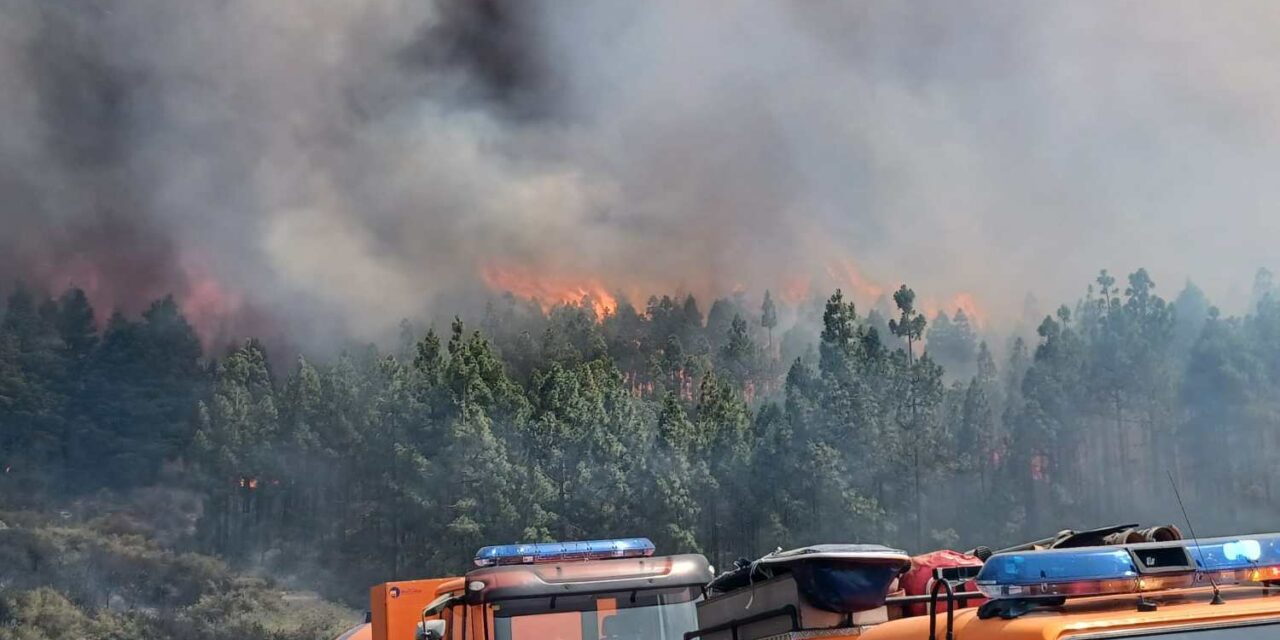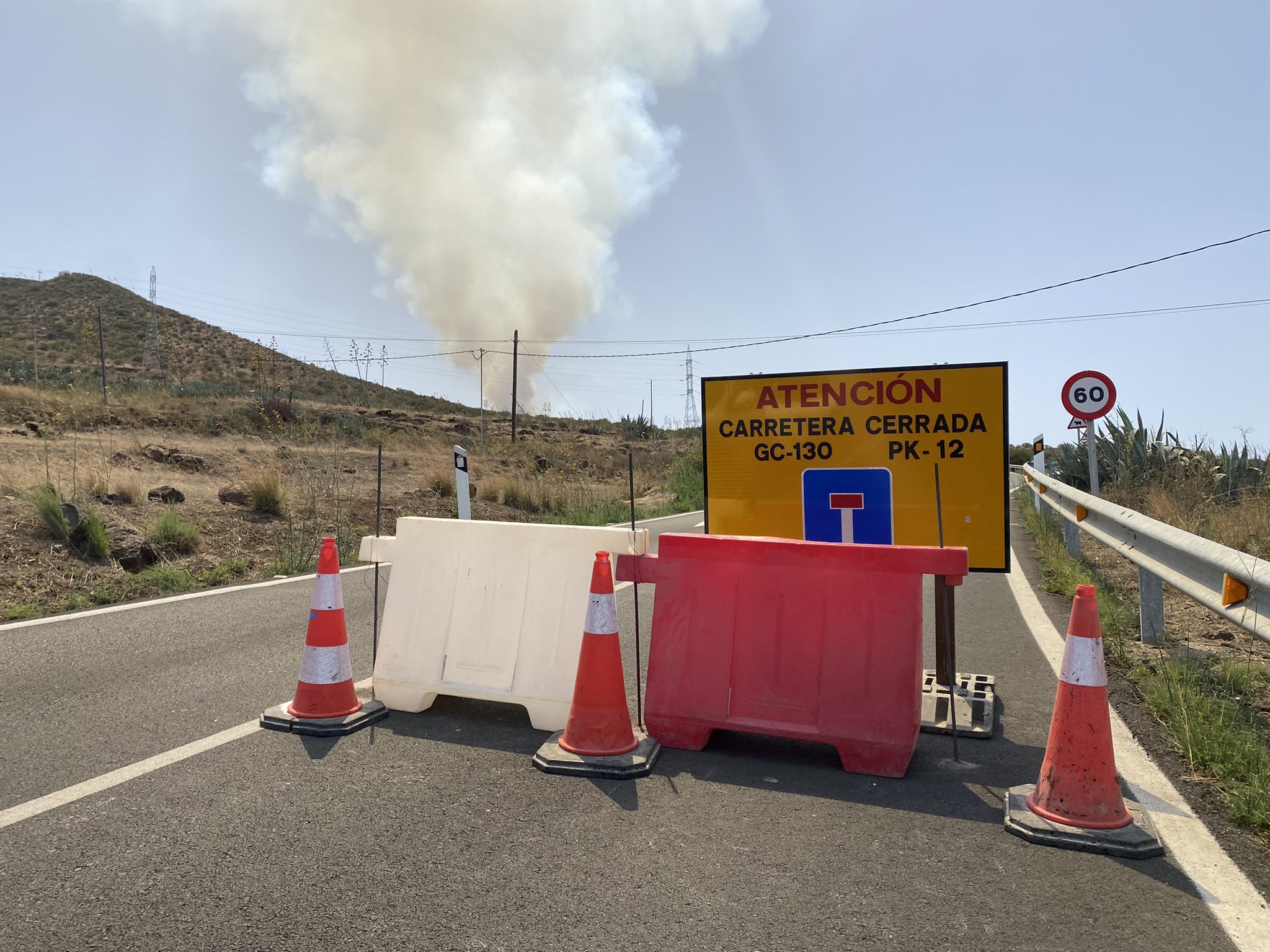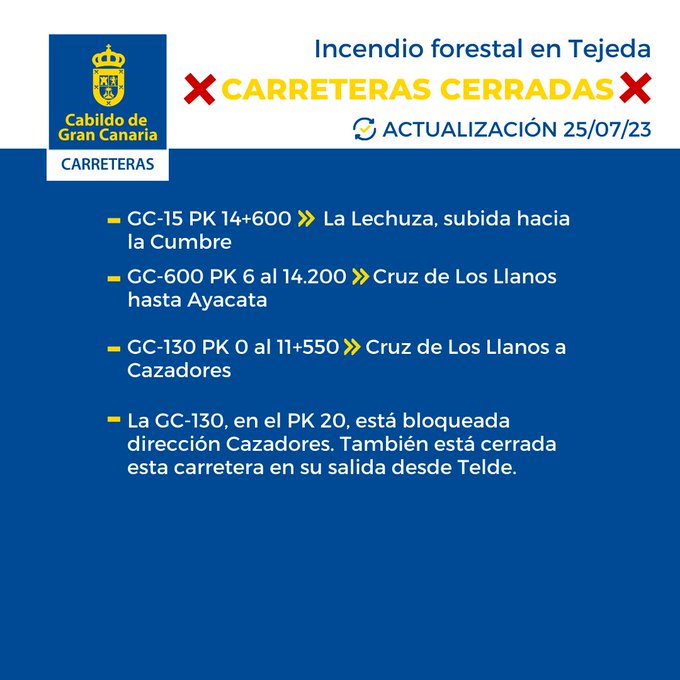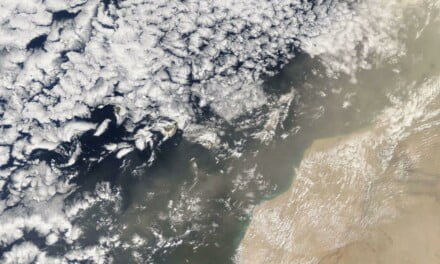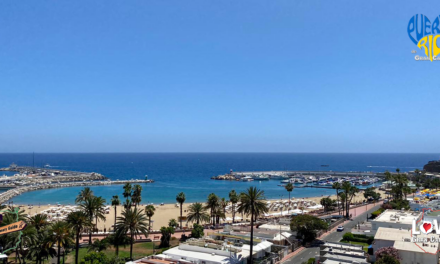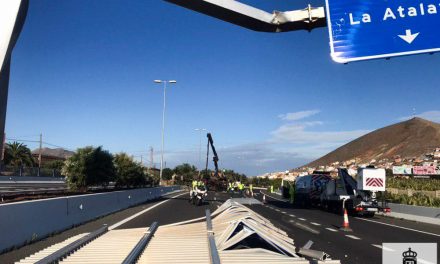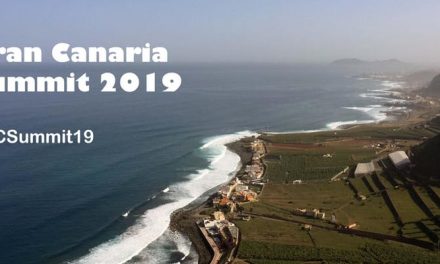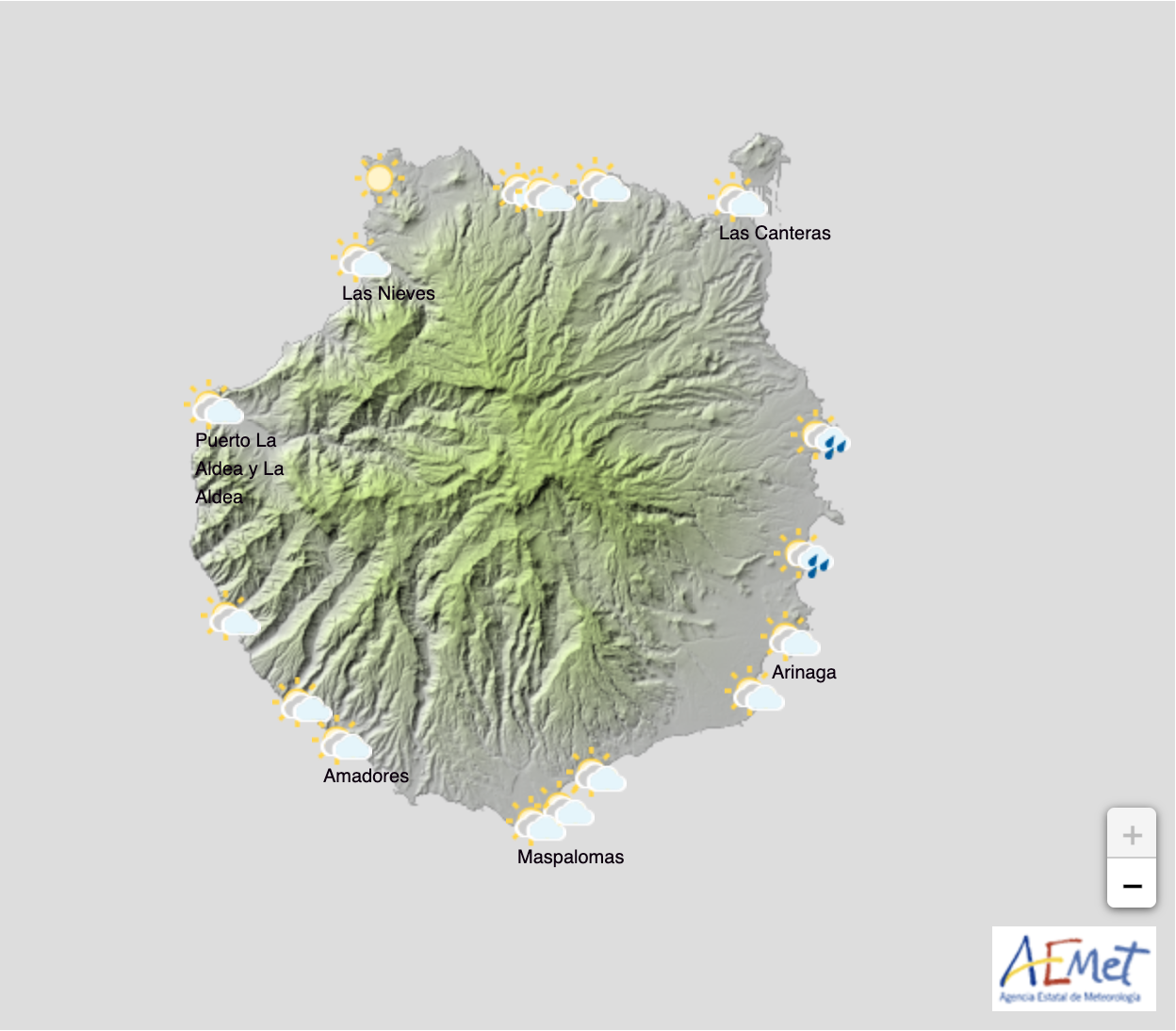The fire that broke out on the summits of Gran Canaria, just after 1pm this Tuesday afternoon, has already affected approximately 200 hectares (primarily pine forest and shrub lands). Despite the fact that large parts of these areas have been previously subject to precautionary “prescribed burns” and some preventive grazing, which has helped to slow down the fire, the fire fighting teams have not managed to control the blaze as quickly as they had hoped, and it has spread beyond the point of origin, managing to jump at least one road and various fire breaks. Some fire crews have had to fall back to safety. Nearly 400 people have been evacuated from the area, including about 100 school children who had been staying at El Grañon campsite and several roads closed to traffic, including the GC 600, GC 15 & GC 130.
For the moment, however, the alert remains at level 1 under the management of the Cabildo. Currently, the fire has not affected any populated areas or houses, and so it has not been seen as necessary to raise the alert level. However, it is not ruled out depending on how the situation develops through the night.
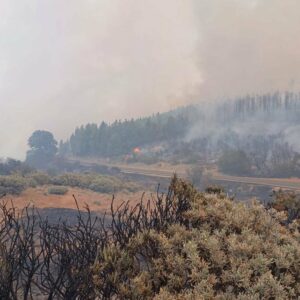 The fire was first reported at the summits of Gran Canaria, in a popular camping and recreation area known as Los Llanos de la Pez, and heading in the direction of the highest point on the island, Pico de Las Nieves, in the municipality of Tejeda, the Cabildo’s technical director of Emergencies, Federico Grillo told a briefing this evening that it “has initially escaped the first means of control due to flying ash”, jumping the GC-130 highway, and now it is expected to continue in the direction of Pico de Las Nieves, threatening the little hamlets of Cuevas Blancas and Caiderillos, so intense work is being done to try to contain it, though it has already jumped towards the north, Grillo specified.
The fire was first reported at the summits of Gran Canaria, in a popular camping and recreation area known as Los Llanos de la Pez, and heading in the direction of the highest point on the island, Pico de Las Nieves, in the municipality of Tejeda, the Cabildo’s technical director of Emergencies, Federico Grillo told a briefing this evening that it “has initially escaped the first means of control due to flying ash”, jumping the GC-130 highway, and now it is expected to continue in the direction of Pico de Las Nieves, threatening the little hamlets of Cuevas Blancas and Caiderillos, so intense work is being done to try to contain it, though it has already jumped towards the north, Grillo specified.
The emergency manager recalled that two roads leading to the top of the island have been closed, with the intention of “shielding” the zone and preventing the general population from accessing the area. He has also indicated that firefighters have been mobilised in the Tirajana basin, to the south, in case ash or some rolling material falls from the burning pine forests that overlooks it. They are doing what they can to keep the fire in the summits area.
The work of the emergency units has been remarkable, but the head of the fire is still very strong, although it has not yet affected the Pico de las Nieves communications antennas, and it is expected that it will not reach them, due to “burning plots (firebreaks)” that should take effect and slow down the advance of the flames.
The president of the Cabildo, Antonio Morales, in statements to the press, said that the extinction work is already being carried out and that “the next two will be key” to try to control the fire. In addition, he announced that two reinforcement helicopters will arrive from Tenerife .
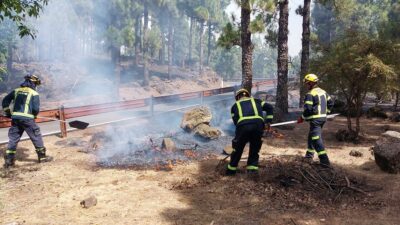 Fire fighters from across the islands have been mobilised, along with the Canary Islands Government Forest Fire Intervention and Reinforcement Teams (EIRIF), and Forest Fire Reinforcement Brigades and helicopters from the Ministry of Ecological Transition.
Fire fighters from across the islands have been mobilised, along with the Canary Islands Government Forest Fire Intervention and Reinforcement Teams (EIRIF), and Forest Fire Reinforcement Brigades and helicopters from the Ministry of Ecological Transition.
Members of the Guardia Civil have been deployed from Tejeda and San Mateo and have been evacuating Pico de las Nieves and other nearby areas as a precaution. In addition, the Cuevas Blancas farmhouse has been evacuated due to its proximity to the fire.
At least one hundred troops and up to nine helicopters are currently working to extinguish the flames, which remains “active” and is heading towards the east of the island, towards the Camaretas area. Fire-fighting personnel from the Cabildo de Gran Canaria are working without rest before the arrival of the night time darkness.
Although at first it was hoped that the flames would be stopped by taking advantage of the thinning of the vegetation at the point of origin, where there are several firebreaks, the fire escaped the first means of control, first affecting Cuevas Blancas and Calderillos. The first advance of the flames reached the fence that delimits the military facilities of the EVA 21 Aerial Surveillance Squadron at Pico de Las Nieves, which hs activated its fire-fighting system, using the fire hydrants at the barracks to prevent the flames from entering the base.
Several sources of flame and smoke can now be seen, one of them in Cruz de Los Llanos, caused by the spread of sparks blown by the prevailing winds from the northeast. Columns of smoke can be seen from various points around the island, including from the southern tourist area.
🔴 Equipo 2 #EIRIF La Gomera aterrizados a las 16:12 en Gran Canaria. Ya se encuentra recibiendo instrucciones de la Dirección de Extinción. #IFTejeda pic.twitter.com/2UY44zkFM7
— EIRIF (@EIRIFGobCan) July 25, 2023

